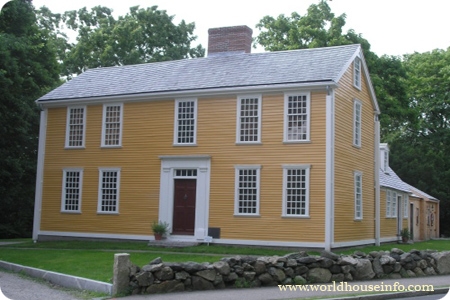Home > Famous house in united states >Hancock Clarke House
Hancock Clarke House

The Hancock Clarke House,Lexington, Massachusetts.
Introduction:
The Hancock Clarke House, located in Lexington, Massachusetts, holds great historical significance as one of the pivotal sites associated with the American Revolutionary War. This historic house, built in the late 17th century, played a crucial role in the events leading up to the famous Battle of Lexington and Concord. In this essay, we will explore the history, architecture, and significance of the Hancock Clarke House, shedding light on its contributions to the American Revolution and its status as a cherished landmark of American history.
History:
The Hancock Clarke House was constructed around 1698 and originally served as the parsonage for the First Parish Church in Lexington. It was named after two of its notable occupants: Reverend John Hancock, grandfather of the famous patriot John Hancock, and Reverend Jonas Clarke. However, it was Reverend Jonas Clarke who had the most profound influence on the house's place in history. As a staunch advocate of colonial rights and liberties, Clarke became a central figure in the revolutionary movement in Lexington.
The Role of the Hancock Clarke House in the American Revolution:
On the eve of the American Revolution, the Hancock Clarke House became a hub of activity and a gathering place for local patriots. It was at this house that important discussions, strategizing, and planning took place among influential revolutionaries, including Samuel Adams and John Hancock. These discussions often centered around resisting British rule and safeguarding colonial rights. The house also served as a safe haven for the storing of important documents and weapons, further solidifying its significance in the revolutionary cause.
The Lexington Alarm and the Battle of Lexington and Concord:
In the early morning of April 19, 1775, the famous Lexington Alarm was sounded, signaling the arrival of British troops marching towards Lexington and Concord. It was at the Hancock Clarke House that Captain John Parker, the leader of the Lexington militia, gathered his men in preparation for the impending conflict. As the British soldiers approached, a brief but fateful encounter took place between the colonial militia and the British troops near the house, marking the beginning of the Battle of Lexington and Concord and igniting the American Revolution.
Architecture and Design:
The Hancock Clarke House is a fine example of late 17th-century New England architecture. The house exhibits a classic saltbox design, featuring a long, sloping roof that resembles an inverted wooden box. The exterior is clad in clapboard siding, while the interior showcases the characteristic features of a colonial-era home, including a central chimney, wooden paneling, and period furnishings. The house has undergone various renovations and restorations over the years to preserve its historical authenticity.
Preservation and Legacy:
Recognizing the historical importance of the Hancock Clarke House, efforts have been made to preserve and maintain the structure. In 1896, the Lexington Historical Society acquired the property and converted it into a museum, ensuring its long-term preservation. Today, the Hancock Clarke House stands as a living testament to the sacrifices and bravery of the early American revolutionaries. It serves as a popular tourist destination, allowing visitors to step back in time and gain a deeper understanding of the events that shaped American history.
Conclusion:
The Hancock Clarke House stands as a symbol of the American Revolutionary War and the courage of the colonial patriots who fought for independence. As a gathering place for revolutionary leaders, a safe haven for important documents, and a starting point for the Battle of Lexington and Concord, this historic house played a significant role in shaping the course of American history. Preserved and cherished by the Lexington Historical Society, the Hancock Clarke House continues to educate and inspire visitors, ensuring that its legacy lives on for future generations to appreciate and learn from.




